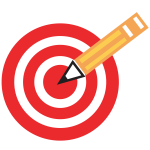
Data Organization
You want to write a nonfiction book. You have selected your topic and you have done your research. Now you have lots of data, but what exactly do you do with it? How do you turn information into a book? Well, first you have to decide on what your data tells you. What is the conclusion you have drawn from your research? And how does that translate into a usable message to your reader?
The Three Steps
Remember the first three steps in preparing to write a nonfiction book are message, target audience and voice. So, your next step is to decide on your message. Does your research present a clear and compelling argument? If so, what is it? Who would benefit from this information? That would be your target audience. Does your research offer any actionable advice? How would it help your readers? Have you had similar experiences that you have personally grown from? Can you tie your own story into the data? Do you have the makings of a memoir/self help book? Or is your goal more academic in nature? Did the results of your research perhaps prove something different than you expected? In what way?
Questions!
Yes, there are lots of questions to answer. But, that is the first step in using your data. Organization of your data requires organization of your intent. What you want to teach, share, convince, impart to your readers is all about your intent. What slant will you use to present your information? What will have the most impact? Because impact matters. That is what gets a book read, and talked about and read some more. And, that is what you want.
So, ask yourself these questions and the answers will give you a starting point. And then, start putting words on paper (or your computer screen). Without words, all you have is data. Once the words are written, you can begin the process of chapter organization and information flow. That will be when all that hard work really starts to pay off, because this is when your research becomes useful to your target audience. And that is the whole point, isn’t it?
See you next time for our discussion on Information Flow!


